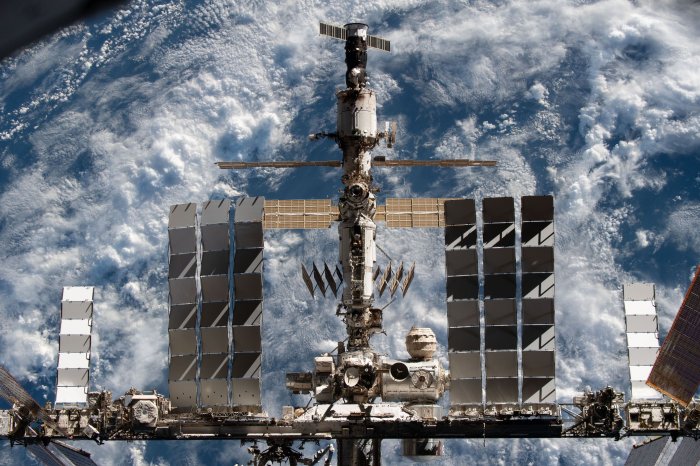An image depicts a Hypergiant Chameleon Constellation satellite, designed for quick software updates in orbit. Image courtesy of Hypergiant
July 27 (UPI) -- The U.S. Air Force and a private technology company in Texas started to develop new satellites this summer that are capable of quick software changes in orbit to respond to threats and to carry out new tasks.
Austin-based Hypergiant, which works on several kinds of artificial intelligence, has a formal but classified agreement to develop technology for the Air Force, with a potential $10 million contract in weapon systems support satellites, founder and CEO Ben Lamm said.
The company, founded in 2018, has about 200 employees and develops artificial intelligence for satellites, surveillance technology and other applications.
For the new military satellites, the goal is to create a new constellation of 24 to 36 satellites, called Chameleon, that could be retasked to avoid debris, counter new weapons and block new cyberattacks or whatever conditions they might encounter, Lamm said.
"We think this could be really helpful to lower the number of devices we have to launch to orbit to accomplish certain tasks," he said. "If you can make them adapt quickly, you don't have to launch as many or as often."
Pushing a software update to traditional satellites can take months, Lamm said, and the industry generally does that once or twice a year. Chameleon's goal is to enable updates in just a few minutes.
Such satellites still would be limited by their hardware to some extent, he said. For example, communications satellites could only be retasked with imaging the Earth if they were built and launched with cameras.
In the future, however, artificial intelligence might enable manufacturing and hardware upgrades in space, as well, Lamm said.
"We don't have to build a Transformer satellite at first that could do anything and add new hardware, but that is the direction we're going," he said, referring to the popular robot movie franchise Transformers.
Lamm calls himself a serial entrepreneur and a provocateur, who learned to seek innovative approaches partly because he traveled the world when he was young and realized how people around the planet live very different lives.
He previously founded an artificial intelligence company that worked on live conversation technology for customer service -- so-called chatbots -- that was acquired in 2018 by the publicly traded firm LivePerson, based in New York.
Whether hardware updates for satellites materialize, speedy, frequent software updates are a goal for the industry, said Shagun Sachdeva, an analyst with Northern Sky Research based in France.
"All manufacturers are going that way now, toward more versatile, software-designed satellites -- Airbus, Lockheed Martin, many others," Sachdeva said. "HyperGiant is adding more artificial intelligence, adding another layer of automation."
With artificial intelligence, satellites even could decide they need repair and fly to a repair satellite on their own, avoiding the path of space debris without instruction, she said.
Eventually, satellite networks will be fully autonomous, said Chris Quilty, founder of Quilty Analytics based in St. Petersburg, Fla.
"Updatable, adaptable satellites will improve resiliency and maximize critical infrastructure for various defense and commercial uses," Quilty said.
The International Space Station is pictured from the SpaceX Crew Dragon Endeavour during a flyaround of the orbiting lab that took place following its undocking from the Harmony module’s space-facing port on November 8. Photo courtesy of NASA
















